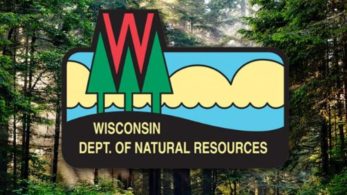Sharp-Tailed Grouse: Their Journey To Recovery
For the first time since 2018, the state of Wisconsin will allow a limited hunt for sharp-tailed grouse this fall. While this announcement is great news for hunters, it is also a win for habitat conservation work in northwestern Wisconsin.
Once widespread across much of Wisconsin, sharp-tailed grouse are now primarily found in the Northwest Sands region of the state. As most of their habitat was converted to agriculture and urban uses or lost due to fire suppression, this region’s relatively open landscape became the last stronghold for the species.
As early as the 1940s, hunters and conservationists acknowledged a steep drop in sharp-tailed populations statewide. A host of concerned parties, including the U.S. Fish and Wildlife Service, tribal nations, wildlife organizations, Friends groups, timber companies, private landowners and state agencies began work to restore the landscape.
Considered habitat sensitive, sharp-tailed grouse also require large open blocks of contiguous habitat. Even with significant work in multiple locations, sharp-tailed grouse habitat remained scattered. As a result, birds stopped moving between properties, and population numbers continued to fall.
By the mid-2000s, the state was approaching the hunting season with caution. Following the 2018 season, sharp-tailed grouse hunting was paused in Wisconsin.
In early 2019, the Natural Resources Board approved the Northwest Sands Regional Master Plan, a comprehensive plan focused, in part, on restoring and connecting pine and oak barrens via “stepping stone” properties to address the lack of contiguous habitat facing sharp-tailed grouse.
In 2021, population numbers from a core group of managed public properties and private lands hit an all-time low. Since then, members of the Sharp-tailed Grouse Advisory Committee have continued to assess lek (dancing ground) surveys to determine population numbers. Landscape-level habitat work, like focused rotational prescribed burns at Crex Meadows and Namekagon state wildlife areas, has continued.
This year is the fourth consecutive year that population numbers have increased. From 2024 to 2025 the sharp-tailed grouse population saw a 7% increase, the largest year-over-year increase since 2010. The advisory committee agreed that numbers had risen enough to support a limited hunt.
DNR biologists are cautiously optimistic that numbers will continue to climb. Opening a sharp-tailed grouse lottery will generate a spike of income that can be channeled back into habitat work. As a result, awareness of sharp-tailed grouse in Wisconsin will continue to grow.
To learn more about sharp-tailed grouse habitat management, please visit the DNR’s Sharp-tailed Grouse Management webpage.
|
